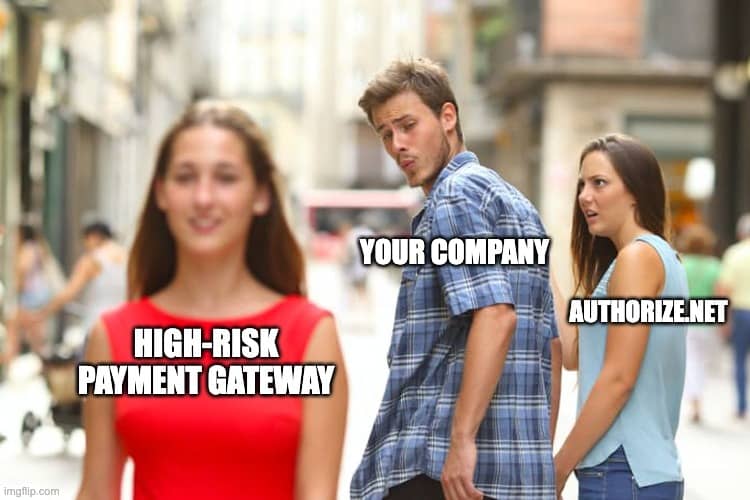How to Accept EBT Payments

It started with a simple idea to make life easier for the working class. As a result, government officials created the EBT program to allow beneficiaries of certain programs to access food and goods, just as they would if their benefits were deposited into an account that could only be accessed through a debit card.
EBT is an all-encompassing system that allows recipients of many income programs to purchase food and goods at stores using a convenient magstripe card. For example, in the past, SNAP (Supplemental Nutrition Assistance Program) participants would receive paper or cardboard vouchers which they could only use in specific grocery shops for certain items. Now with EBT, you can buy whatever your heart desires by simply swiping it through any register!
Accepting EBT payments allows you to grow your customer base and lower transaction costs. While some paperwork is involved with the system, any business can take advantage of it by having their equipment programmed for these transactions. Note that while SNAP programs primarily apply to grocery stores and farmers’ markets, the EBT system also supports authorized retail purchases from TANF recipients who are in need. In other words, adding a merchant account with EBT support can be an excellent way to provide something for your customers that they might not have otherwise.
In this article, we’ll walk you through the process of applying to become an authorized EBT retailer and discuss the hardware requirements for accepting these payments. We’ll also cover how processing costs differ from regular PIN debit or credit card transactions. Don’t let your business go hungry. Suppose you’re considering a new credit card processing provider. In that case, the best way to make sure you find what’s right for your company is by shopping around with different providers and comparing them side-by-side so that they can compete head-on in all aspects of their service offerings - not just pricing alone.
Table of Contents
- What are EBT, SNAP, Food Stamps and Other Key Terms
- EBT For Retailers: Regulatory Requirements
- How to Accept EBT Payments
- How To Get An EBT Card Reader
- How Much Does EBT Processing Cost?
- Is Accepting EBT In My Store The Right Choice?
What are EBT, SNAP, Food Stamps and Other Key Terms
The EBT system is a payment method for government assistance programs. However, it can also provide relief to recipients of other benefits such as food stamps, temporary cash assistance, medical payments through Medicaid or Medicare, among many others.
EBT also provides an efficient way for families on these different kinds of public aid to receive their monthly stipends without having to worry about carrying around large sums in cash while traveling from place to place each day trying not to get robbed!
See below for more information on these public aid programs:
**What is SNAP?**
The Supplemental Nutrition Assistance Program (SNAP) is a federal program administered by the United States Department of Agriculture’s Food and Nutrition Service (FNS). The FNS provides nutrition benefits to supplement the food budget for needy families, allowing them to purchase healthy foods that help with self-sufficiency.
**What is WIC?**
WIC, short for “The Special Supplemental Nutrition Program for Women, Infants, and Children,” is a joint federal/state program that provides healthy food to supplement the diets of low-income women and children. Although the WIC offers information on healthy eating and referrals to health care providers if necessary, their main focus centers around supplying nutritional food items such as milk or cereal bars to alleviate nutrition risks among those with limited resources.
**What is TANF?**
The Temporary Assistance for Needy Families program (TANF) is a federally-funded, state-run benefits program that helps families achieve independence after experiencing temporary difficulties. The US Department of Health & Human Services manages the federal level. At the same time, each state has its own TANF to disburse and distribute benefits through their respective programs like California’s CalWORKS Program.
EBT For Retailers: Regulatory Requirements
Registering for EBT in your business is easy, but you have to be patient. You can do it all online, and most of the steps are straightforward. Presently, there’s not much paperwork involved at all!
The first thing you need to do is obtain a simple permit from FNS; permits are available to any business that meets statutory requirements. With an approved application containing supporting documentation, your business will qualify! To be qualified for a SNAP permit, businesses must meet at least one of these criteria:
- Your business sells four categories of staple foods: dairy, breads and grains, fruits and vegetables, or meats. At least two of these must be perishable.
- If one category by itself accounts for more than 50% of gross retail sales
Do you fall into one of these categories? If so, just point your browser over to the FNS website. Before applying for SNAP benefits, it helps if you establish an eAuthentication Account with the FNS by verifying your identity online within minutes.
How to Accept EBT Payments
To start your own eAuthentication Account, you’ll first need to fill out and submit an application and supporting documentation. It’s recommended that the process take no more than 15 minutes for completion; however, depending on how much information is needed for the specific answer(s) required by this assignment, it may require a deep dive into records (and potentially additional research). Once approved, applicants will have 30 days to complete their applications with all necessary documents included. Please note: The questions asked about applicants are comprehensive. Make sure you’re prepared before diving headfirst into filling everything out online—you don’t want any surprises after submitting your application or being denied due to incomplete/incorrect answers (*grin*). Be prepared to show the following:
- Your current business license
- Copies of all IDs for everyone how had ownership in the business (driver’s licenses and passports)
- Social Security cards
- Your bank’s information (name and address)
- Contact information for your merchant service provider (name, phone number, website, and address)
The information you enter onto the FNS application form will take between 45 to 60 days for approval. During this period, your SNAP benefits will not be available and may cause food insecurity during that time frame. Some additional information to consider when applying for SNAP permits:
- MSOs cannot use the online application process - instead, an FNS representative will work with them to approve their permit. MSOs are defined as owners of 10 or more eligible retail food stores.
- You may also have the option to get your SNAP permit from any qualified grocery store, farm stand or farmers’ market!
- The SNAP program only allows food items to be purchased. This means that people can’t buy hot foods, restaurant meals or alcohol with their benefits from the government’s Supplemental Nutrition Assistance Program (SNAP). Some other non-food items are also not allowed, such as pet food and household goods.
- Customers can buy food items that are approved by the SNAP program. They cannot get cashback or refunds if they make a purchase with their EBT card and must enter the PIN number at the time of payment for verification purposes.
Once approved for your SNAP permit, you’ll be given an FNS Account Number that identifies your business as one of the most trusted in processing food assistance benefits! You’ll need to reconfigure your equipment first, though - we’ll walk you through that process in this article as well! So keep reading to learn more!
How To Get An EBT Card Reader
Now that you have your SNAP permit and know how to access EBT payments, what’s next? Your business needs a terminal for processing transactions. It may be hard to believe that this is not the most exciting part of getting set up with SNAP, but it’s something worth considering because there are specific things every merchant should consider before purchasing their own hardware. First off, does your terminal accept PIN debit transactions or just swipes only? You’ll need first to make sure you’re using a machine that accepts PIN-debit card purchases as well, though such machines can vary greatly.
Once you’ve obtained a terminal and PIN pad, it must be programmed with your merchant account provider’s encryption keys. If the equipment is purchased directly from your merchant account provider, this should already have been done, but if not, re-programming will need to happen before accepting EBT payments.
Depending on your provider and a few other variables, re-programming usually requires a one-week turnaround time, but with the introduction of EMV chip cards, you may be able to do it in as little as two days. In addition, EBT cardholders can currently use magstripe only, so there’s no need for an EMV compatible terminal. The FNS announced plans to introduce these types of chips back in 2014 and is still working towards getting them available through local retailers; however, all transactions are completed manually until then. This means that recipients will have access to their funds without having any issues at checkout stations or when withdrawing money from ATMs.
The USDA offers free equipment for small businesses that participate in the SNAP program. However, not all grocery stores and restaurants are eligible to receive this benefit. Instead, they must buy their own processing equipment or use a merchant account provider who may charge them an additional fee. Some exceptions include farmers’ markets, direct-marketing farms, military commissaries, nonprofit food buying cooperatives like Group Living Arrangements, where residents need assistance with obtaining necessary nutrition such as treatment centers and prepared meal services (other than those run by for-profit restaurant programs).
How Much Does EBT Processing Cost?
The United States Government sponsors the EBT program, which makes it comparatively cheap to process. The average interchange fee and PIN debit fees are nonexistent in this type of transaction, leaving only a small per-transaction processing cost for merchants like you! For example, a merchant service provider can charge a flat $0.10 EBT transaction fee.
Not all providers are so enlightened, however. Before signing up, you’ll want to know how your chosen provider treats EBT transactions because it can be a costly account for some if they don’t do their research beforehand. Unfortunately, most websites on the market will not disclose pricing information, and you’ll have to look in your contract documents or discuss it with an agent over the phone. Still, there is no harm in asking what that rate would be and seeing what other options might exist from another company before committing yourself too quickly. Also, be careful if your merchant account uses tiered pricing since this means you could end up paying even more than standard credit card purchases just for using EBT cards at certain retailers.
If you have a merchant account set up only for EBT transactions, then your PCI compliance fees will be waived. This is because the requirements of complying with PCI-DSS do not apply to these types of transactions. The vast majority of merchants that accept debit/credit card payments also accept EBT credit cards, so they won’t need to worry about this change either!
It’s important to realize that not all providers offer support for EBT payments. If you’re looking to open a new merchant account or switch providers, this is something you’ll want to clarify before signing up. The FNS website features a list of approved merchants that accept SNAP payments. In the past, this list has been less than two years old; however, it is already outdated and not inclusive by any means.
There are, though, some helpful tips when selecting an account provider for EBT payments, such as avoiding potential problems with phone lines after hours or during weekends. According to their disclaimer, the FNS cannot be held responsible for unauthorized charges, errors, disputes or misleading information from selecting one of these third-party providers. Therefore, when choosing a TPP, the customer should do their own research to make sure they have made an accurate and informed decision.
FNS hasn’t ) researched the performance, business practices, reputation, or ethics of companies included on this list and cannot hold itself liable for any problems arising from selection by customers! SNAP authorized retailers need to conduct their own research when deciding what type of provider is best suited to help meet company needs and assess if leasing/buying equipment will cost more than expected before making such decisions.
Is Accepting EBT In My Store The Right Choice?
EBT payments are a great way to increase sales for your business. The process of registering as an EBT merchant is quick and easy, with minimal costs involved depending on the size of your establishment. Registration also helps you give back by providing customers who may have otherwise had difficulty paying their bills with another option beyond cash!
If you don’t already have a merchant account, or your provider doesn’t support EBT payments, consider an EBT-only option. This can save you money in the form of lower processing costs and fees without having to pay interchange rates on PIN debit transactions as well as PCI compliance charges which are generally associated with credit card use. You’ll also get a free terminal from some providers if they offer it when opening this type of account!
Lastly, online shopping may soon be a reality for recipients of food stamps. The new pilot program is working on expanding EBT payments online by giving recipients access to their cards to buy groceries through an internet store, similar to how most other Americans currently do this with ease.
The idea of implementing an EBT payment system in your business may seem daunting at first, but it can have a profound impact on the community in which you reside. The USDA has published statistics that show approximately 40 million Americans were living below the poverty level, and 19% of households are food insecure, with children accounting for 15%. Some benefits of using this type of payment include ensuring customers receive nutritious meals while supporting local businesses by giving them better customer service opportunities. The benefits of EBT should not be underestimated.
Read Next

Find out whether Authorize.Net works for high risk merchants, what restrictions you might face and how to get approved.

Get expert advice on selling CBD products on Shopify, including compliance tips and setting up secure payment options.

Find out why Square may deactivate merchant accounts and steps to resolve issues and maintain uninterrupted payment services.
Need a High-Risk Merchant Account?
Disruption-free payment processing at the best price for your situation, guaranteed.
Get Free Guidance Now!